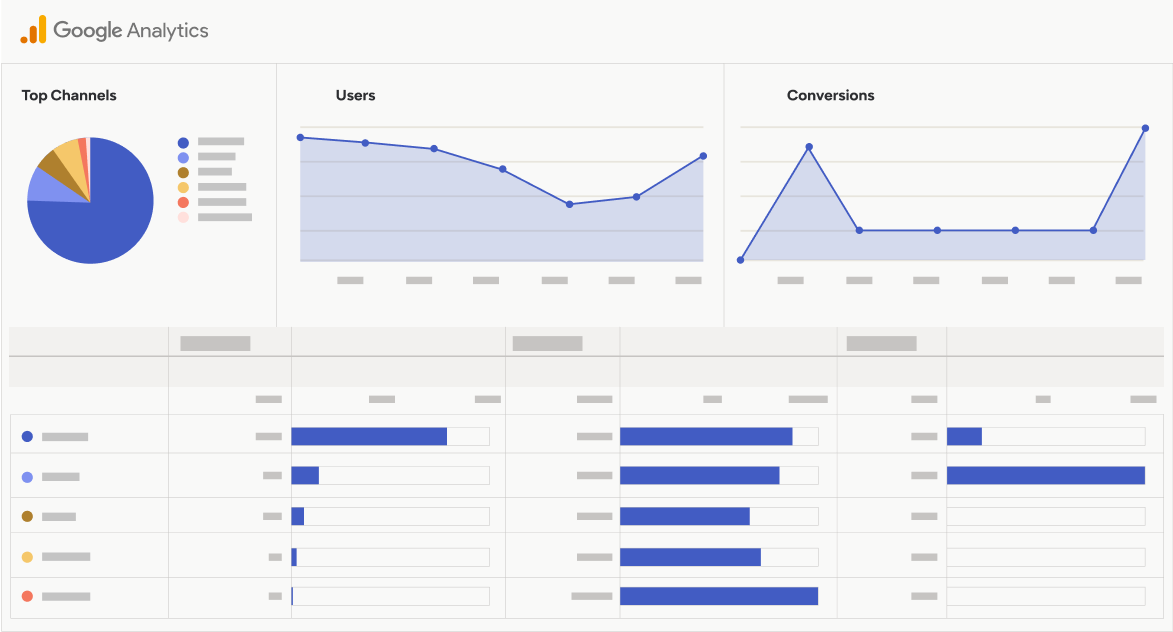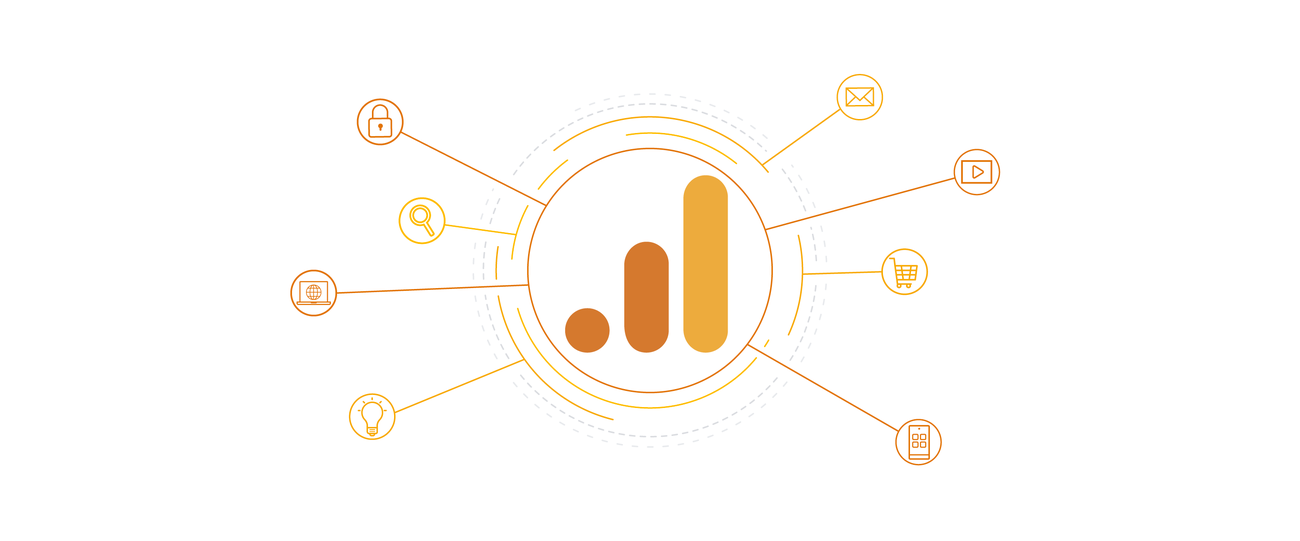Discover When Does the Google Analytics Tracking Code Send an Event Hit to Analytics and Why It Issues
Discover When Does the Google Analytics Tracking Code Send an Event Hit to Analytics and Why It Issues
Blog Article
Master Internet Site Insights With Accurate Google Analytics Monitoring Code
The effective usage of Google Analytics rests on the exact execution of its monitoring code, an essential action commonly forgotten by site proprietors. This apparently basic JavaScript bit, when appropriately placed, ends up being the foundation of information collection, supplying insights right into individual habits and site performance. However, challenges can develop throughout arrangement, potentially skewing the data and resulting in mistaken choices. Comprehending these complexities is necessary for maximizing the benefits of analytics. What are the common risks that could weaken your tracking initiatives, and how can you ensure precision in your method?
Comprehending Google Analytics Basics
Google Analytics is an essential tool for website owners and marketing professionals, providing very useful insights right into individual actions and site efficiency. At its core, Google Analytics accumulates data concerning site visitors to a web site, permitting users to examine metrics such as traffic sources, individual involvement, and conversion rates. Comprehending these principles is essential for maximizing an internet site's effectiveness and improving user experience.
The platform utilizes cookies to track communications, tape-recording data such as web page sights, session durations, and bounce rates. This details is accumulated and provided via personalized dashboards, enabling customers to imagine trends with time. Secret performance signs (KPIs) can be kept track of, such as the overall variety of users, brand-new versus returning site visitors, and the geographic circulation of the audience.
Furthermore, Google Analytics supplies segmentation attributes, permitting individuals to isolate specific website traffic resources or user demographics for more targeted analysis. By grasping these fundamental components, internet site owners can make enlightened choices regarding content method, marketing projects, and overall website improvements. Ultimately, understanding Google Analytics basics is vital for leveraging data to drive growth and achieve business purposes successfully.
Establishing Up Your Tracking Code
Copy the provided tracking code and paste it right into the HTML of your web site. This guarantees that the monitoring code lots prior to any type of various other material, permitting it to catch data properly.
After setup, verify that the monitoring code is functioning appropriately by utilizing Google Tag Assistant or the Real-Time records in Google Analytics - when does the google analytics tracking code send an event hit to analytics?. This step is vital to confirm that your information collection is precise and energetic, setting the structure for insightful evaluation
Common Monitoring Code Issues
Many internet site owners run into typical concerns with their Google Analytics tracking code that can impede information collection and analysis. One widespread issue is incorrect installation. This may take place when the tracking code is positioned in the wrong area of the site's HTML, commonly resulting in absent or incomplete information. Additionally, having several circumstances of the tracking code on a solitary web page can cause filled with air metrics, as customer interactions may be counted greater than as soon as.
An additional concern occurs from the usage of advertisement blockers, which can prevent the tracking code from executing altogether, therefore skewing data. when does the google analytics tracking code send an event hit to analytics?. Additionally, failing to set up filters properly can cause the exemption of important traffic sources or the addition of unwanted referral spam, distorting the data gathered
Site proprietors might likewise ignore the relevance of monitoring code updates, specifically when moving to Google Analytics 4 (GA4) from Universal Analytics. Last but not least, not enough screening prior to releasing modifications can lead to undiscovered errors in the tracking code, further complicating data integrity. Addressing these typical problems is important for making sure precise tracking and insightful analytics.
Analyzing Site Data Properly
Precise data collection is just the very first step in leveraging Google Analytics; the real worth lies in efficiently examining that data to drive enlightened decision-making. To accomplish this, it is vital to determine key efficiency indicators (KPIs) that straighten with your service goals. Emphasis on metrics such as conversion rates, customer interaction, and traffic resources, as these will provide understandings into customer habits and the overall effectiveness of your internet site.
Making Use Of Google Analytics' division features enables a deeper understanding of your target market. By breaking down information right into certain demographics, behaviors, and web traffic networks, you can uncover fads and patterns that inform targeted approaches. Executing custom reports and control panels can streamline this procedure, allowing quick access to essential information.
Moreover, frequently assessing data patterns with time helps to determine anomalies and chances for renovation. important site Utilize visualization tools to present information in a conveniently digestible format, promoting much more efficient interaction with stakeholders. Ultimately, the capability to examine website data successfully encourages organizations to make strategic decisions that improve individual experience, maximize advertising and marketing efforts, and drive growth.

Best Practices for Accurate Tracking
Executing reliable tracking techniques is important for obtaining reliable data in Google Analytics. To ensure precise tracking, begin by appropriately setting up the Google Analytics tracking code on every web page of your site. This can be completed with a tag supervisor or by directly installing the code into the HTML.
Next, configure your Google Analytics account to omit inner traffic. This can be done by establishing up filters that determine and remove sees from your company's IP more tips here address, therefore stopping manipulated information. Furthermore, use event monitoring to keep track of certain individual interactions, such as downloads or video plays, which typical page views may ignore.
Routinely investigate your monitoring arrangement to validate that all attributes, such as objectives and ecommerce monitoring, are functioning properly. Establish a consistent naming convention for your events and campaigns to assist in much easier coverage and evaluation.
Last but not least, consider leveraging UTM specifications for projects to gain insights right into the efficiency of various marketing efforts. By complying with these ideal practices, you can improve the precision of your data collection and analysis, ultimately causing more educated decision-making for your website.
Final Thought
Precise execution of the Google Analytics tracking code is essential for understanding site understandings. By guaranteeing the monitoring code is correctly placed and on a regular basis audited, site owners can capture important customer interaction information, therefore assisting in the identification of essential performance indicators. Efficient evaluation of this data, integrated with adherence to finest methods, enables informed decision-making and the optimization of on-line methods. Ultimately, a robust monitoring framework boosts the capability to drive interaction and enhance overall web site performance.

Not enough testing before releasing adjustments can result in unseen mistakes in the monitoring code, additionally complicating data reliability.Applying efficient tracking techniques is vital for acquiring reputable data in Google Analytics. useful reference By ensuring the monitoring code is correctly positioned and regularly examined, site owners can catch essential user interaction information, therefore assisting in the identification of crucial efficiency signs.
Report this page